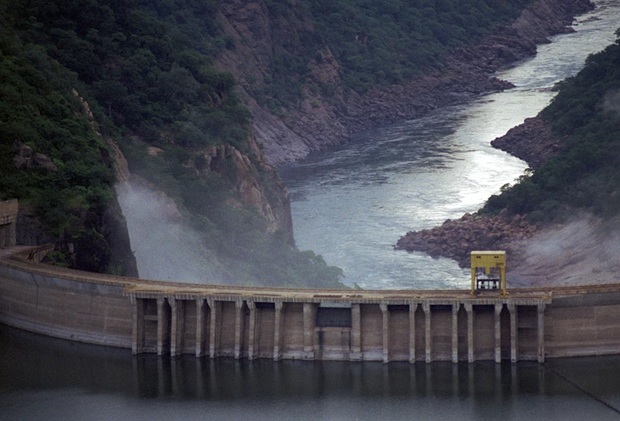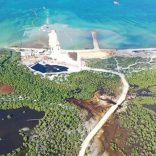Mozambique: South Africa's Eskom bought 66% of Cahora Bassa electricity in 2024
Mozambique: Cahora Bassa Hydroelectric Plant posts record profits in 2024

File potto: Lusa
The Cahora Bassa Hydroelectric Plant (HCB) in central Mozambique has estimated record profits of US$225 million (€215.4 million) in 2024 and expects to increase its reduced water storage levels by the end of this year.
In a statement sent to Lusa, the management of HCB, one of the largest independent hydroelectric power producers in southern Africa, said it had last year achieved a total production of 15,753.52 GigaWatt-hours (GWh).
“This figure was reached in an adverse hydro-climatic context characterised by a severe drought caused by the occurrence of the El Niño phenomenon, the negative impact of which led to the adoption and implementation of management measures for the operation of the reservoir, which aimed to safeguard the hydraulic and operational safety of the dam and related infrastructures, which allowed Cahora Bassa to have better water storage levels than the dams in the countries upstream,” the statement reads.
The document adds that at the end of the first period of the 2024/2025 rainy season, on 31 December 2024, the reservoir’s level reached 305.20 metres above the mean sea level, which corresponds to 21.19% of useful storage.
However, current forecasts point to the occurrence of the La Niña phenomenon this year, “with a high probability of normal rainfall in this region, particularly in the Zambezi Basin”.
“In conjunction with hydrological management measures, which included the suspension of any discharge throughout 2024, HCB expects to recover, by the end of 2025, the storage level that will allow it to achieve hydro-energy production with the potential to meet the needs of the country and the region, in the current year and subsequent ones,” the statement highlights.
Quoted in the document, the chairman of the company’s board of directors, Tomás Matola, states that “despite the hydro-climatological constraints” and “as a corollary of careful management of the company’s resources, based on principles of austerity and maximization of financial gains”, the current data, still in the audit process, indicate that “the 2024 performance could generate net results of more than 225 million US dollars, values that exceed the records of the 2023 financial year and of the entire history of HCB”.
As a result of this performance, Tomás Matola estimates that HCB will pay the Mozambican state in 2025, in taxes, fees and dividends, around US$292 million (€279.5 million), “which demonstrates the structuring and strategic role” of the company “in the development of the country and in improving the living conditions of Mozambicans”.
The Mozambican state holds 90% of the share capital of HCB, since the transfer to Mozambique, agreed with Portugal in 2007, while the Portuguese company Redes Energéticas Nacionais (REN) has a share of 7.5% and Eletricidade de Moçambique 2.5%.
The Cahora Bassa reservoir is the fourth largest in Africa, with a maximum length of 270 kilometres and 30 kilometres between banks, occupying 2,700 square kilometres and an average depth of 26 metres, with almost 800 workers.
The company also emphasizes that in 2024, for the first time in its history, it did not record any work accidents.













Leave a Reply
Be the First to Comment!
You must be logged in to post a comment.
You must be logged in to post a comment.